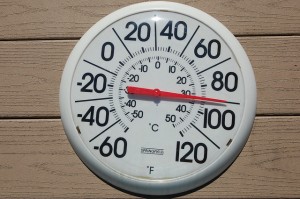For those unfamiliar with Florida, the climate is considered temperate, ranging from sub-tropical to tropical. Of Florida’s four geographical regions, the largest portion is equatorial rainforest with the defined rainy season stretching from June through September. Being situated between the Atlantic Ocean and the Gulf of Mexico, Florida is prone to hurricanes, tropical systems and frequent afternoon thunderstorms. These elements all combine to create a humidity hothouse.
Hiking in heat and high humidity can be a recipe for disaster. Humidity works against the body’s natural cooling process. Under normal conditions the body cools itself by evaporation of perspiration. In a humid environment the sweat doesn’t evaporate as quickly because the surrounding air is already saturated with moisture. This can create a dangerous situation for people who are outdoors and if not acted upon immediately can cause heat exhaustion, heat stroke and even death.
Despite the risk, this doesn’t mean that hiking in Florida in the summer is completely out, but it does require that hikers modify their tactics.
- Get acclimatized. Build up exposure to hot and humid conditions over a period of 5-8 days. This helps the body regulate temperature more efficiently.
- Stay hydrated. Drink plenty of water before and during the hike even if you don’t feel thirsty. Waiting until thirst sets in means the body is already starting to dehydrate.
- Hike early in the morning and late in the evening. Seek shelter in the shade and rest when the sun is high. Take a page from the animal’s handbook and lay low when temperatures are soaring.
- Apply cool cloths to wrists, neck, under hats and under the armpits to help cool the body during extreme temperatures. Prepare ahead of time by filling a water bottle 2/3rds of the way full and place it in the freezer the night before a hike. This will provide cool water for drinking and can help during an emergency if one becomes overheated.
- Pay attention to heat warnings and refrain from hiking in extreme conditions.
- Know the symptoms of heat illnesses and take action to prevent it and/or remove yourself or others to a cooler location when in distress. Be prepared to seek medical attention when necessary.
- Don’t make the mistake of counting on a cooling breeze from the ocean or gulf. Even though there might be mild sea breezes along the shoreline, step a few feet into the interior and the heat and humidity can become unbearable.
- Wear the proper clothing. Wear white or light colors that reflect the energy of the sun. In addition, be sure to utilize a wicking material that pulls moisture away from the skin and transfers it to outer shell.
- Pace yourself and rest frequently. Leave plenty of time to complete the hike without turning it into a marathon session. Hiking is meant to be enjoyable.
- Hike smart and don’t take chances. Let someone know where you are going and what time you expect to be back.
All outdoor activities carry a certain level of risk. Even the most prepared hiker can run into a situation that he or she didn’t anticipate. Be aware of your limits and don’t push yourself beyond them. If the weather situation isn’t conducive to hiking, reschedule the hike. The trail will be there for you to tackle on another day.



